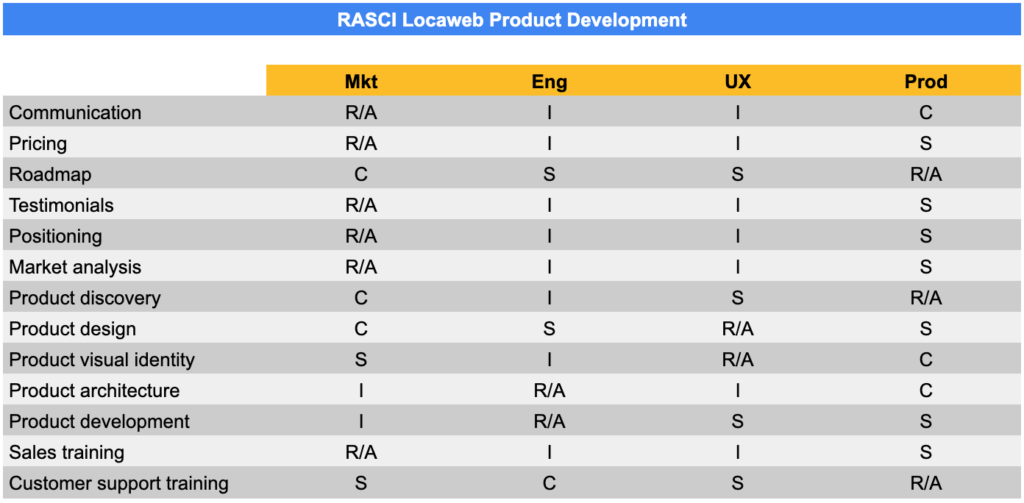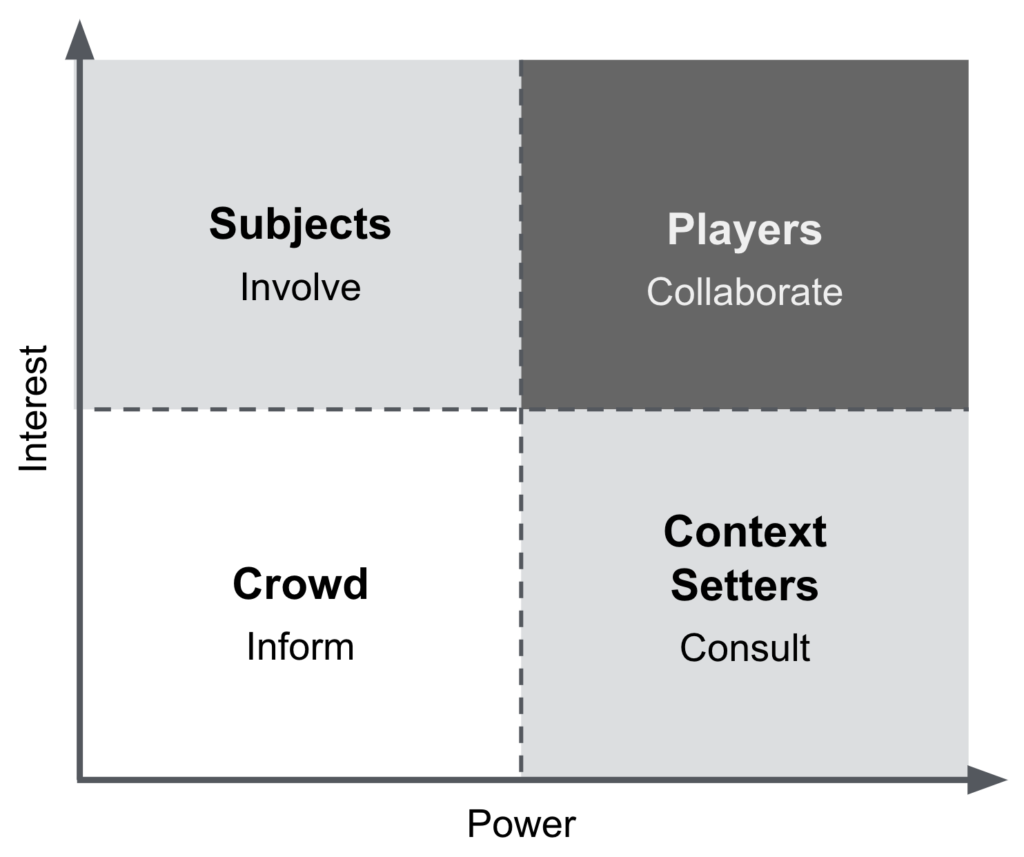The main reason why products fail
20 de December, 2022Happy 2023!!!
2 de January, 2023In the chapter What is the difference between product marketing and product management? I commented on how marketing 4Ps (Product, Price, Promotion, and Place) are distributed between product marketing and product managers. This is a macro view of the division of responsibilities. In it, I also talked about how these teams (marketing and product management) should work closely together for the success of the products they develop and manage, as do the Engineering and UX teams, which, despite being distinct roles, should also work closely with product management. Another role that may overlap with the product manager is the project manager. Project managers in product development teams with agile culture are called the Scrum Masters, Agile Coaches, or Delivery Managers.
This proximity often raises some questions such as: “Who is responsible for this task?”, “Whom do I need to consult before moving this other task forward?” and “Who needs to be with me so I can complete this other task successfully?” Often, these situations become jump balls: one thinks she is responsible for a particular task, and the other thinks the same. Or worse, one thinks the other is responsible, the other thinks the first one was, and no one does anything.
RASCI
RASCI is a very useful tool to help define and understand the roles and responsibilities of each person and function. It is the abbreviation of the first letters of the possible roles that a person, area, or function can have in a task:
- Responsible: the person responsible for executing the task, that is, who has to lead the effort to plan, do and complete the task. There cannot be more than one responsible. Remember the saying that a dog with two owners dies of hunger.
- Accountable: the person responsible for the task and who has the power to delegate the task to be done to the responsible. Responsible and accountable can be the same person. The rule also applies that there cannot be more than one accountable per task. If responsible and accountable are two different people, the accountable can be seen as the sponsor.
- Support: are the people or teams that work together and under the coordination of the responsible for the execution of the task.
- Consulted: the people or teams who do not participate in the execution of the task but who need to be consulted before or while the task is being performed, as they can provide relevant inputs for its execution.
- Informed: the people or teams who do not participate in the execution of the task, nor need to be consulted before or while the task is being performed, but who need to be informed when the task is completed.
The following is an example of a RASCI responsibility matrix between engineering, UX, product marketing, and product management that we used at Locaweb:

HOW TO USE
The first step is to build the responsibility matrix. My recommendation is to fill this table by bringing together all the people involved in a room, so you can discuss whether the division of responsibility is ok for everyone and if a task is missing. Most likely, some “shared responsibilities” will appear, but this is a great time to discuss them and define who is responsible. There can be only one person responsible for any task.
Then, the team should try to do the tasks following the responsibility matrix for some time, like one or two months. Then, it is important to do a retrospective to see if everything is ok, or if any adjustment is needed.
From then on, the use becomes automatic, and people will no longer need to refer to the responsibility matrix. Every year, when a question arises, or even when a new task arises, it is good to revisit it.
Power-Interest Grid
There are other areas that don’t work so closely with product management in building the product. For these areas, a good tool to use is the Power-interest Grig.
The Power-Interest Grid is a concept first developed in the 90s by Aubrey L. Mendelow and later explained in the book “Making Strategy: Mapping Out Strategic Success”, by Fran Ackermann and Colin Eden. Based on the power and interest a person or team has in your product, you can classify them into four main categories.

- The players are those who have great power and interest in your product. You need to collaborate with them often. The users and customers of your product are players, and you need to collaborate with them to build the best product that solves their problems and meets their needs. In some companies, the closest founder to the product is probably a player. You should invite these people to any meeting where strategic decisions are made. Schedule individually to present the decisions and ask for their comments and contributions.
- The subjects are those with little power but high interest in your product. They do not have the power to veto or change decisions, but they have a deep interest in your product. In some companies, we can think of customer support, sales, and marketing as examples of areas that play the role of subjects. They have great interest but do not have the power to change the product. You can communicate with them via weekly status emails and product demos. It is important to collect their opinions, but remember that they do not have the power to change your decisions.
- The context setters are those with the power to change your product but little interest in your product. Examples of areas that can play the role of context setters are HR and Legal. If HR doesn’t help you build the team, you won’t have a team to build your product. If Legal is not aware of and aligned with the legal aspects of your product, it has the power to block or delay its launch. A CFO and a controller are also two functions that have the power to change decisions that affect your product. It is important to keep context setters well-informed about product decisions. Consult with them before making important decisions. Keep them informed weekly.
- The crowd is the one with low power and little interest. Even if they have little power and interest, it is important to keep them informed. Usually, a monthly update on the progress of the product is sufficient. It can be by email or in a monthly general meeting with product demos – I’ll talk about this and other meetings in another chapter. Usually, people in the HR, Legal, Administrative and Financial areas are not in the context-setting group.
It is important to note that each company has its own dynamics. Therefore, an area or person that plays a specific role in the power-interest grid of a given company may have another role in a different company.
Empathy
These two tools are very useful for the product manager to better understand how to relate to the other areas of the company and how to manage their expectations.
However, those tools are more useful when combined with empathy, a fundamental tool for the product manager to manage her stakeholders. Empathy is the ability of one person to put himself in the place of another to understand his expectations. Their desires, motivations, needs, and problems.
This characteristic is important for the product manager to understand the customers and users of the product, to know how they relate to it, and what problems they expect to solve or what needs they want to be met. It also helps to understand the impact of your product on your team and people in other areas. Last but not least, the product manager also needs to put herself in the shoes of the owner of the product to understand their expectations of the results the product will bring to the company.
Summing up
- RASCI is a very useful tool to help define and understand the roles and responsibilities of each person and function.
- The Power-Interest Grid and RASCI are great tools to help you better understand and interact with your stakeholders.
- But don’t forget, the main tool that a product manager needs to master and, consequently, have improved and fruitful interactions with its stakeholders is empathy.
In the next chapter, we will start a new book section to discuss product portfolio management. Stay tuned!
Digital product training, coaching, and advisory
I’ve been helping companies bridge the gap between business and technology through training, coaching, and advisory services on digital product development and management. Check here how I can help you and your company.
Newsletter
I write regularly about product management, product development, digital product leadership, and digital transformation. You can receive a notification whenever I publish a new article, without depending on any social network algorithms to notify you! Just subscribe to my newsletter.
Digital Product Management Books
Do you work with digital products? Do you want to know more about how to manage a digital product to increase its chances of success, solve its user’s problems and achieve the company objectives? Check out my Digital Product Management bundle with my 3 books where I share what I learned during my 30+ years of experience in creating and managing digital products:
- Startup Guide: How startups and established companies can create profitable digital products
- Product Management: How to increase the chances of success of your digital product
- Leading Product Development: The art and science of managing product teams
You can also acquire the books individually, by clicking on their titles above.

